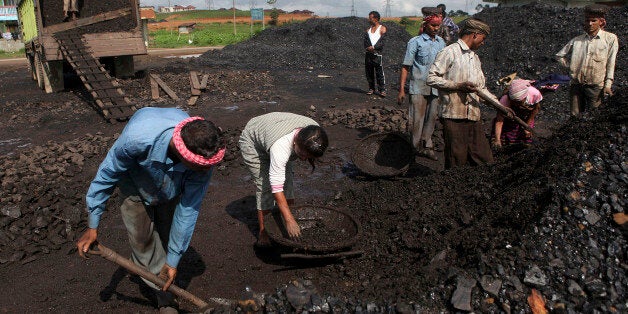
NEW DELHI -- The agreement between U.S. and China on climate change at the APEC summit in Beijing last week sent participants at the G20 summit in Brisbane struggling to reconcile their response to this unexpected development. Tony Abbott, as rotating chairman, must be wishing he had stuck to his initial idea of not keeping climate change on the G20 agenda.
On the plus side, the agreement accepts that industrialized nations who have been emitting gases for decades should bear more responsibilities in combating climate change as compared to developing economies. The pact seems to agree to the point that developing nations, as they are growing faster, need not have to adhere to the same standards as the West. It appears the U.S. has come around to this view as commitments from both the U.S. and China are not the same. This is a validation of the point of view championed by India during the government led by UPA 2 [The United Progressive Alliance is a center-left coalition of parties that includes the Indian Congress Party].
While it a is positive development that the two largest economies of the world have agreed on a common goal, the pact also raises expectations that India will capitulate to the demands of developed nations to reduce emissions. Particularly as, after China and the U.S., India is the third top polluting country, the deal certainly puts pressure on India.
In fact India might find herself isolated at the global forum as China has already agreed to the U.S. demand to curtail pollution.
India, during the tenure of the Manmohan Singh led UPA 2, had strongly resisted attempts by developed economies to apply the standards of the West in controlling emissions. Jairam Ramesh, then environment minister of India had stressed that it is unfair to set a peak year on the grounds that India is entitled to economic growth.
Under UPA 2, India had stood its ground on the issue of refrigerant coolants and refused to discuss it under the Montreal Protocol, an international treaty formulated to protect the ozone layer by phasing out the production of chemicals responsible for ozone depletion. When Prime Minister Narendra Modi met the U.S. President Barack Obama, he agreed to discuss the same issue under the Montreal Protocol rather than under the climate convention. In fact, the Indian government led by Modi, indicated that India has reduced its opposition to an amendment proposal to reduce HFC emissions and is willing to work towards a collaborative solution.
Talking about the U.S.-China deal, Chandra Bhushan, deputy director general of Centre for Science and Environment said ,"if India were to follow the principles of this deal, then we need not do anything till 2040 and beyond. Our per capita emissions in 2030 will be less than 4 tonne CO2e compared to 12 tonne of the U.S. and China." Therefore the demand of developed nations that both rich and poor nations should agree to a common framework for the obligations is unjustified.
The UPA 2 government had maintained that while India is indeed the third largest polluter, if you consider the per capita pollution, our emission figures are low. The per capita energy consumption in India is less than 150 units a year; in the West it is close to 10,000 units. Simply put our per capita emissions are around 1.9 tonnes per person. It is 7.2 tonnes per person in China and the world average is 5 tonnes. By this measure, India is among the least polluting nations in the world.
Around 400 million Indians still do not have access to electricity. With electrification and development, our emissions are certainly set to rise. It would be disastrous for India if the National Democratic Alliance government under Modi surrenders to the demands of developed nations to cut down emissions.
In the pact, China has pledged to raise its renewable energy generation to 800 gigawatts by 2030, twice as much what it is today. To compare, India has only a capacity of 30 gigawatts today.
What is also ironic is that the Indian subcontinent will bear the brunt of climate control the most. Being in the tropics, the region is more vulnerable to extreme weather events like heat waves, floods and crop failures. This being the case, the SAARC (South Asian Association for Regional Cooperation) countries, particularly India, should have a bigger say in any decision on climate control.
Is Prime Minister Narendra Modi's pledge to boost renewable energy the first step towards appeasement to the U.S.? Because the bulk of India's power will come from thermal coal, it's unrealistic to expect to address our gigantic energy needs with solar energy.
The NDA government under Narendra Modi has so far been tightlipped about the negotiations for the new climate treaty intended to be finalized next year in Paris. Nor has the government revealed anything about the position it would take at the United Nations climate talks next month in Lima, Peru. The U.S.-China deal has cornered India among other nations to present their post 2020 targets in the Paris conference.
Earlier this month the Modi government diluted the Council on Climate Change -- the apex body which helps the government on domestic policy and international negotiations on climate change -- divesting it of hard nosed environmentalists like Sunita Narain of the Centre for Science and Environment and appointing retired bureaucrats instead.
Not just India, the developing world is watching with baited breath whether the Prime Minister of India will dilute the policy of his predecessors of not ceding to the demands of the West in emission control.

